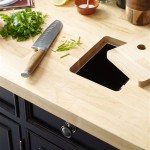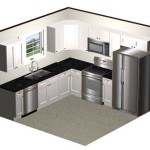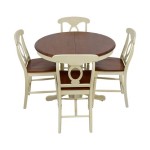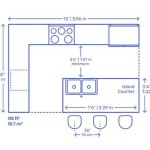Wood or Tile in the Kitchen: A Comparison for Homeowners
Choosing between wood and tile flooring for a kitchen is a common dilemma for homeowners. Both materials offer distinct advantages and disadvantages, making the decision dependent on individual needs, preferences, and lifestyles. This article provides a comprehensive comparison of wood and tile flooring in the kitchen, exploring their respective characteristics to help homeowners make informed choices.
Durability and Maintenance
Tile, particularly porcelain or ceramic tile, is renowned for its exceptional durability. It resists scratches, stains, and water damage, making it an ideal choice for high-traffic areas like kitchens. Regular sweeping and occasional mopping are typically sufficient for maintenance. Grout lines, however, can be susceptible to staining and may require periodic sealing or deep cleaning. Wood flooring, while offering a warm and inviting aesthetic, is more susceptible to scratches, dents, and water damage. Engineered wood flooring fares slightly better than solid wood in terms of moisture resistance due to its layered construction. Regular cleaning, preventative measures like using mats and felt pads on furniture, and periodic refinishing are essential for maintaining the appearance and longevity of wood floors.
Comfort and Aesthetics
Wood flooring provides a natural warmth and comfort underfoot, making it a pleasant surface to stand on for extended periods. It offers a timeless appeal and can enhance the overall aesthetic of a kitchen, adding a touch of elegance or rustic charm depending on the wood species and finish chosen. Tile, while generally harder and colder than wood, can be aesthetically versatile. Available in a vast array of colors, patterns, shapes, and textures, tile can complement a wide range of design styles, from classic to contemporary. Radiant heating systems can be installed beneath tile flooring to mitigate its coldness, increasing comfort levels significantly.
Cost and Installation
The cost of both wood and tile flooring varies considerably based on material quality, complexity of installation, and labor costs. Generally, ceramic tile represents a more budget-friendly option than wood, particularly solid hardwood. Porcelain tile tends to be more expensive than ceramic, while engineered wood flooring falls somewhere in between ceramic tile and solid hardwood in terms of cost. Installation complexity also differs between the two materials. Tile installation often necessitates the skills of a professional tiler due to the intricacies of laying tiles, grouting, and ensuring a level surface. While some experienced DIYers may be able to install wood flooring, professional installation is often recommended, especially for solid hardwood which requires precise nailing or stapling.
Resale Value
Both wood and tile flooring can positively contribute to a home's resale value. Hardwood flooring, in particular, is often perceived as a premium feature by homebuyers, adding a touch of luxury and increasing the perceived value of a property. Tile, while not carrying the same premium as hardwood, is still considered a durable and desirable flooring option, especially in kitchens and bathrooms. Ultimately, the impact on resale value will depend on the overall quality of the installation, the condition of the flooring, and the prevailing market trends.
Moisture Resistance
As previously mentioned, tile offers superior moisture resistance compared to wood. Its impervious surface prevents water penetration, making it highly resistant to warping, staining, and damage caused by spills or humidity. Wood, particularly solid hardwood, is more susceptible to moisture damage. While engineered wood offers improved moisture resistance, excessive exposure to water can still cause swelling and warping. Therefore, wood flooring in kitchens requires careful consideration of potential moisture sources and appropriate preventative measures.
Lifestyle Suitability
The choice between wood and tile often depends on lifestyle factors. For households with children or pets, tile's durability and easy maintenance make it a practical choice. Its resistance to scratches and stains can withstand the wear and tear of active families. Wood, while offering a warmer and more inviting ambiance, may require more diligent maintenance and preventative measures to protect it from damage in busy households. For those prioritizing comfort and a natural aesthetic, wood might be the preferred option, provided they are prepared for the associated maintenance requirements.

Wood Floor Tiles A Great Flooring Solution For Your Home Interior Design And Decorating Decoração Cozinha Grande Piso Residencial Remodelação Da Casa

Latest Kitchen Wall And Floor Tiles Designs Design Cafe

5 Wood Look Tile Flooring Ideas Lowe S

Hardwood Flooring Vs Ceramic Tiles Ambience

Cheap Porcelain Wood Tile Kitchen Manufacturers And Suppliers Wholesale Price Hanse

Our New Wood Look Tile Floors Brepurposed

Top 10 Wood Effect Tiles Stylish Designs Walls And Floors

Tile Vs Hardwood Floors In The Kitchen Calypso Country

Hardwood Or Tile Floors For The Kitchen Oakland And San Francisco

7 Reasons To Love Wood Look Tile The Rta Store








